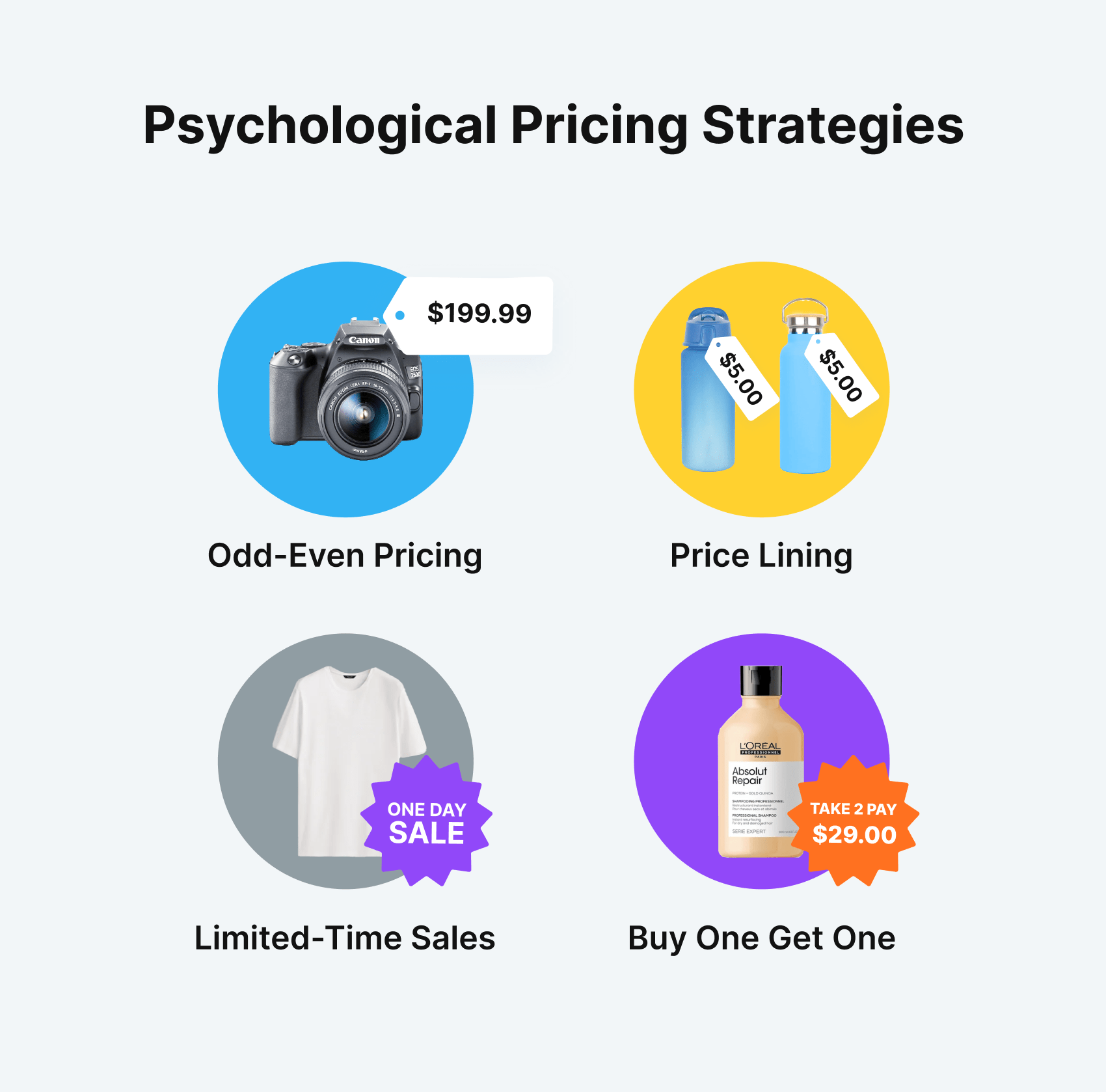Psychological pricing stands as a cornerstone in retail strategy, profoundly influencing how customers perceive product value and, subsequently, their purchase decisions. A well-executed psychological pricing strategy can catapult sales and boost customer engagement, providing an edge in the competitive retail landscape.
Content navigation:
- What is Psychological Pricing?
- Psychological Pricing Strategies
- Pros and Cons of Psychological Pricing
- Examples of Psychological Pricing
What is Psychological Pricing?
Psychological pricing is a strategic method retailers leverage to make their products more appealing to customers. At its core, it focuses on developing the customer's value perception. Instead of solely basing price on supply, demand, or production costs, psychological pricing considers how price presentation affects consumer behaviour. In essence, it nudges customers into believing they are getting more value for their money.
Psychological Pricing Strategies
- Odd-Even Pricing: This pricing method involves ending prices with odd numbers just under a round number, for example, pricing an item at $4.99 instead of $5. This strategy exploits consumers' tendency to "round down" prices in their minds, making the product seem less expensive than it actually is.
- Price Lining: Retailers use price lining to group similar items with different qualities at distinct price points. This technique guides customers toward more expensive options by demonstrating the added value they bring.
- Limited-Time Sales: Limited-time sales create a sense of urgency, pushing customers to buy products immediately or risk missing out on the deal.
- Buy One Get One (BOGO): This strategy provides an item free of charge or at a discount if the shopper buys another item at the regular price. This approach can often lead customers to buy more items than they initially intended.

Among these strategies, retailers can choose the most suitable approach based on their business goals and customer base. The best practices often involve a blend of different tactics to cater to a wide range of customers.
Pros and Cons of Psychological Pricing
Pros:
- Increases Sales: A psychological pricing strategy can effectively drive sales by making customers perceive products as more affordable or valuable.
- Appeals to Emotional Buyers: This pricing strategy appeals to the emotional aspect of purchasing, often prompting impulse buying.
- Competitive Advantage: Retailers can gain an edge over competitors by adopting a psychological pricing strategy that resonates with their customer base.
Cons:
- Could Harm Brand Reputation: If not implemented carefully, psychological pricing can make a business seem manipulative or deceitful, which can negatively impact its reputation.
- May Decrease Perceived Quality: Lower prices can sometimes lead consumers to believe that a product is of lesser quality.
- Not Always Effective: Some customers are price-savvy and may not fall for psychological pricing tactics.

Examples of Psychological Pricing
Many retailers use psychological pricing to drive sales. For example, Apple uses price lining by offering their iPads at different price points based on storage capacity, thereby highlighting the additional value of higher-priced options.
In the online marketplace, Amazon employs limited-time sales, especially during the holiday season, to create a sense of urgency among shoppers.
Psychological pricing serves as a versatile tool for retailers to attract and retain customers. When implemented carefully, it can significantly boost sales and improve customer satisfaction. However, retailers must ensure that they balance psychological pricing with other strategies to provide real value to their customers. After all, sustaining customer trust and satisfaction is paramount to long-term business success.
Conclusion
Psychological pricing is an effective tool in the arsenal of a savvy retailer. Appealing to the subconscious mind aims to make products more attractive, thereby driving sales. Retailers can create a perception of value and affordability through various strategies such as odd-even pricing, price lining, and limited-time sales.
However, like any strategy, psychological pricing isn't without its disadvantages. The potential risk to a brand's reputation and the issue of perceived quality cannot be overlooked. Therefore, it's important to use psychological pricing judiciously, ensuring that it's appropriately balanced with other pricing strategies.
Remembering that the modern shopper is more informed and discerning is also crucial. As such, businesses must always strive to maintain transparency, ensuring that the emphasis is not just on the price, but on the quality and value of their products too.
When used correctly, psychological pricing can undoubtedly enhance a retailer's pricing strategy. However, understanding the customer and offering real value should always be at the heart of any successful retail strategy. After all, a satisfied customer is the most effective marketing strategy of all.
Remember, pricing is not just about numbers; it's a comprehensive approach where psychology plays a vital role. So, next time you plan your pricing strategy, remember to consider the psychological impact of your prices on your customers. Happy selling!






